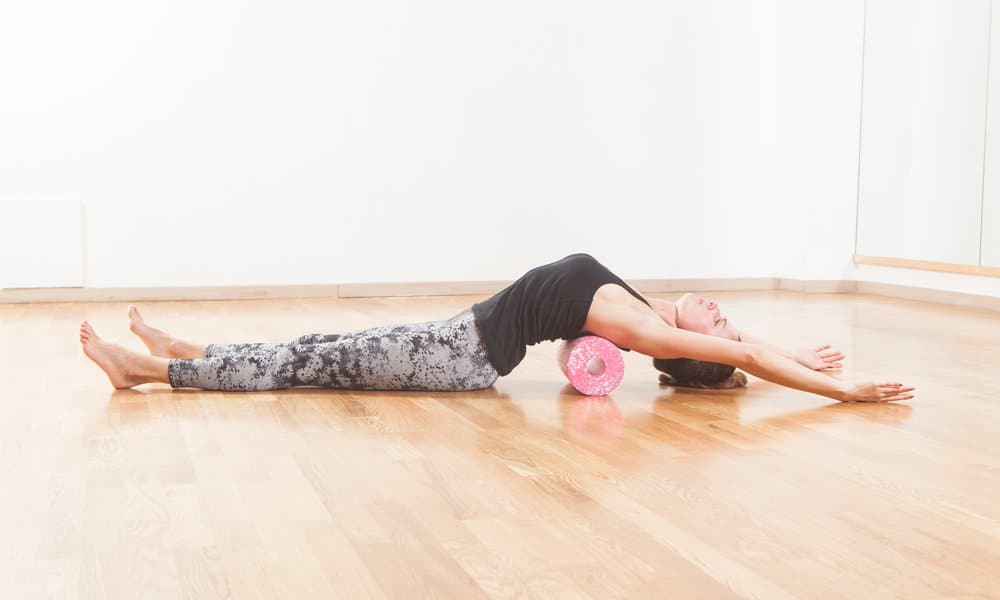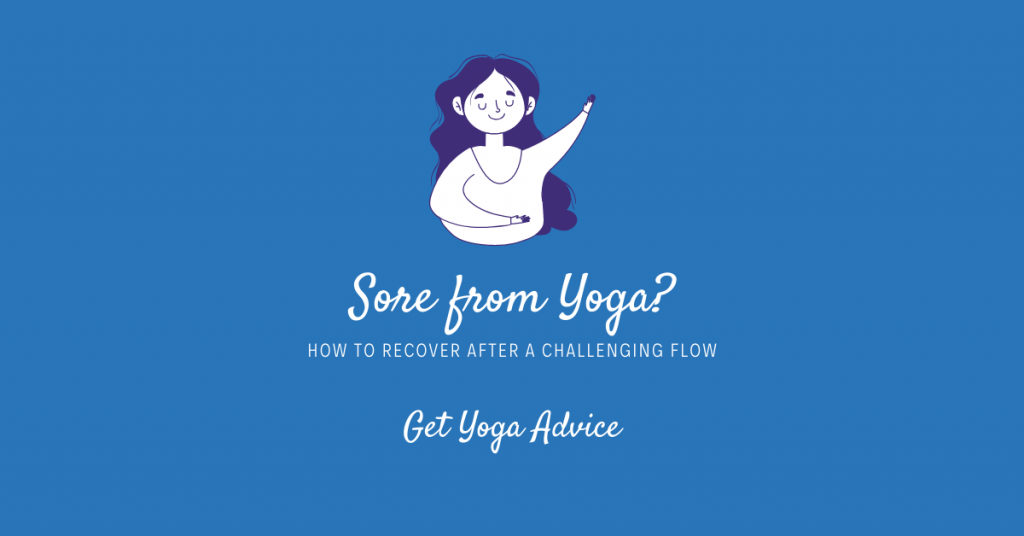Are you sometimes sore from yoga?
While yoga is a smooth, stretching activity, it can leave you feeling sore whether you are getting started or have pushed yourself into some new yoga postures.
Yoga leaves you feeling refreshed and wonderful but can leave you with some aches and pains too, especially if you have been incorporating deep stretches that target lesser-used muscles.
Your muscles will be the first to warn you they have been stressed and stretched in unfamiliar ways. Muscles can also become sore due to overuse. You might not notice soreness right away. It can show up 12–48 hours later as delayed onset muscle soreness (DOMS).
Muscle soreness can vary depending on the type of yoga you practice, how intensely you exercise and how often. Body type might be a variable too. Even if you are an experienced yoga practitioner, you might feel soreness if you put excess strain on your muscles.
Yoga, like most exercise, induces muscle contractions, which cause microscopic tears in the muscles and facial tissue. When this happens, the body produces an inflammatory response that causes those muscles to feel sore.
An ache in the muscle is not a bad thing. Muscles will work to recover from this effect, and that means muscle growth and better overall performance. Strength is gained through this soreness.
One thing to be aware of is soreness that is unnatural or very painful. Soreness usually refers to a short-term ache or dull throb. If the pain is extreme or will not go away, then it’s time to see a doctor. If you determine the pain is regular soreness from a good yoga session, then you can take some basic steps to ease the soreness and aid in muscle recovery.
Below are some suggestions on how to help alleviate soreness and what you should avoid.
Contents
- 1 1. Drink Water
- 2 2. Get Lots of Sleep
- 3 3. Stay Away From Caffeine and Energy Pills
- 4 4. Exercise Regularly
- 5 5. Use a Foam Roller
- 6 6. Eat a Well-Balanced Meal
- 7 7. Stay Away From Anti-Inflammatory Medication
- 8 8. Take a Hot Bath
- 9 9. Practice Stretching
- 10 10. Do Not Engage in Heavy and Deep Stretching
- 11 11. Keep Practicing Yoga
- 12 Final Thoughts About Feeling Sore From Yoga
1. Drink Water

Hydration helps with muscle recovery. It helps muscles heal after a good yoga workout session and helps you make sure you don’t dehydrate if you get hot. Be sure to drink lots of water before, during and after yoga to keep yourself feeling good. Drinking water increases your blood volume and helps ensure your body is getting the nutrition it needs, healing your cells and ridding the body of metabolic waste.
Check out our explainer on how do runners recover.
2. Get Lots of Sleep
Sleep is the body’s time to regroup and heal. Without rest, your body is unable to slow down and let the parasympathetic nervous system take over. Sleep allows the neuroendocrine system to get the body and tissues ready for repair during downtime.
3. Stay Away From Caffeine and Energy Pills
They increase your calorie intake and add unhealthy substances you should not need since the body simply needs gentle yoga movement, water and time to recuperate.
4. Exercise Regularly
While it sounds odd to address soreness from exercise with more exercise, the activity actually helps. If you repeat the same movements and routines that made your muscles sore, additional exercise can help reduce the fatigue.
This works only when you repeat the movements less intensely than you originally did. Follow-up exercise will slow the muscle spasms and allow greater range of motion. Restorative yoga helps your muscles recover strength and flexibility after challenging workouts, stressful events or illnesses.

5. Use a Foam Roller
If you practice foam rolling for about 20 minutes after you finish your yoga routine, it will help reduce soreness. Roll in a slow and gentle way so you don’t exacerbate the soreness.
6. Eat a Well-Balanced Meal
It is a good idea to eat a post-workout snack or meal with lean protein and healthy carbohydrates. Protein is essential to repair and build muscle. Carbohydrates help with recovery as well.
7. Stay Away From Anti-Inflammatory Medication
Often a person’s initial reaction to pain is to take a pill to relieve the soreness, but that might not be the best way to help your body. Inflammation helps repair damaged muscles, so if you prevent that process by taking medication, then you are slowing your body’s healing processes.
8. Take a Hot Bath
Resting in a tub of hot water helps the parasympathetic nervous system begin its work after your workout. It helps reduce tension and promotes healing because the body enjoys the heat of the water. The bath will also help you continue to relax and de-stress.

9. Practice Stretching
Gentle and easy stretching increases circulation in the body. Stretching increases the range of motion while reducing pain and aches from yoga. A hot yoga studio can make it easier to stretch as your core tempura will rise and blood will flow faster.
10. Do Not Engage in Heavy and Deep Stretching
Practicing long holding or deep stretches with sore muscles can cause harm rather than good. Because your tissues are inflamed from yoga and are beginning to work on healing, more intense stretching removes all the fluid from them. Dehydration substantially slows healing and can even damage the tissues.
11. Keep Practicing Yoga
Just because you are sore from yoga does not mean you should not practice. You just need to move gently to prevent damage and slowly reduce muscle tension and tightness. Keep practicing yoga to reduce the soreness each time you exercise.
Final Thoughts About Feeling Sore From Yoga
Feeling sore from yoga isn’t unusual, particularly if the session is hard and you’re not used to holding challenging stretches.
You can employ some simple ways to reduce this pain so the soreness isn’t overwhelming. Then you can recover quickly and continue with your yoga routine.



